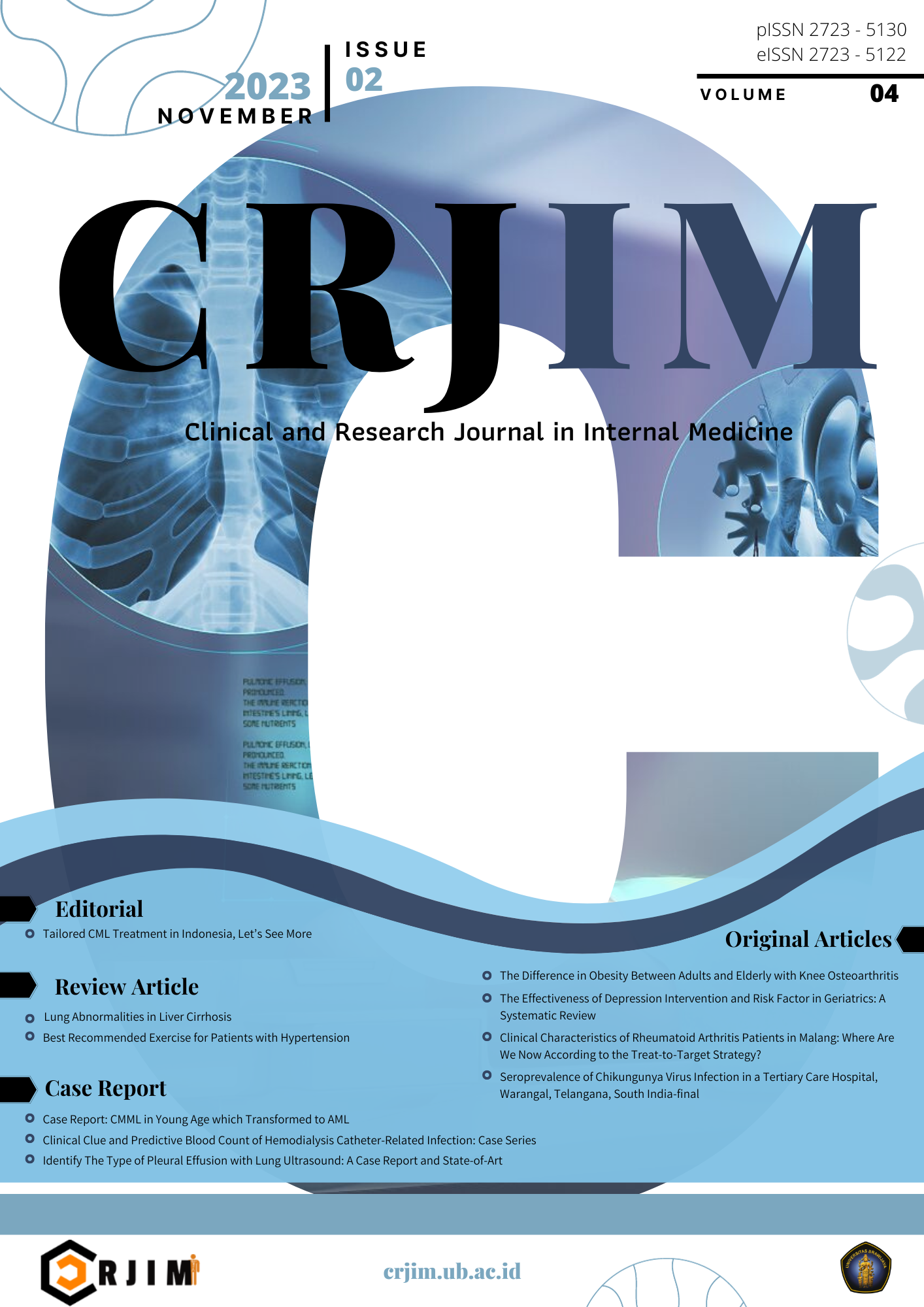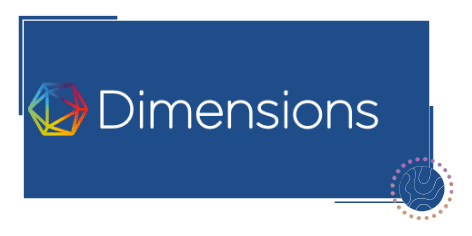Cardiac Rehabilitation to Prevent Rehospitalization in Myocardial Infarction Patients
DOI:
https://doi.org/10.21776/ub.crjim.2022.003.02.6Keywords:
Cardiac Rehabilitation, Rehospitaliztion, Post Myocardial InfarctionAbstract
Introduction. There is mounting evidence that cardiac rehabilitation (CR) based on physical activity has a positive influence on the degree of disability and level of quality of life, in addition to playing an important and beneficial role in modifying morbidity and mortality.
Discussion. Patients who have experienced an acute myocardial infarction, are candidates for cardiac rehabilitation as an essential component of their care. Clinical evaluation, optimization of pharmacotherapy, physical training, psychological rehabilitation, evaluation and reduction of coronary disease risk factors, lifestyle modification, and patient education are the components that should be included in comprehensive cardiac rehabilitation. Immediately following the acute phase of a myocardial infarction, the designated team (consisting of a physician, physiotherapist, nurse, psychologist, dietician, and social worker) should begin comprehensive cardiac rehabilitation. This rehabilitation should contain individualized programs that are designed to optimize the patient's physical, psychological, social, and emotional status. It is recommended that the modern model of comprehensive cardiac rehabilitation be started as soon as possible, continued for the required amount of time, properly staged, and individualized depending on the clinical status of the patients.
Conclusion. Cardiac rehabilitation after myocardial infarction is an exercise method that could improve the post myocardial infarct patient’s living quality, includes increasing cardiac ejection fraction, exercise tolerance, and physical status. Therefore, it can decrease rate of rehospitalization in patient post myocardial infarct.
References
Dylewicz P, Przywarska J, Borowicz-Bieńkowska, S et al. Physical activity and coronary heart disease in men: The Harvard Alumni Health Study. Vol. 102, Circulation. United States: Urban & Partner; 2002. 975–980 p.
Dobraszkiewicz-Wasilewska B, Baranowski R, Korzeniowska-Kubacka I, Rydzewska E, Piotrowicz JO i R. Porównanie efektów treningu interwałowego i treningu w wodzie u pacjentów po zawale serca i po operacyjnym leczeniu choroby wieńcowej - wyniki wstępne. Cardiol J. 2004;11(11):831–7.
Babu AS, Noone MS, Haneef M, Naryanan SM. Protocol-Guided Phase-1 Cardiac Rehabilitation in Patients with ST-Elevation Myocardial Infarction in A Rural Hospital. Heart Views. 2010 Jun;11(2):52–6.
ds. Opracowa Dylewicz ACK, Jegier A, (przewodniczący) RP, Rudnicki S, Tylka J, Mazurek K, et al. KOMPLEKSOWA REHABILITACJA KARDIOLOGICZNA. Folia Cardiol [Internet]. 2004;11(A). Available from: https://journals.viamedica.pl/folia_cardiologica/article/view/24241
Sandesara PB, Lambert CT, Gordon NF, Fletcher GF, Franklin BA, Wenger NK, et al. Cardiac rehabilitation and risk reduction: time to “rebrand and reinvigorate”. J Am Coll Cardiol. 2015 Feb;65(4):389–95.
on Rehabilitation after Cardiovascular Diseases with Special Emphasis on Developing Countries WHOEC, Organization WH. Rehabilitation after cardiovascular diseases, with special emphasis on developing countries : report of a WHO expert committee [meeting held in Geneva from 21 to 18 October 1991]. World Health Organization; 1993. p. 122 p. (WHO technical report series ; 831).
Dylewicz P, Przywarska J, Borowicz-Bieńkowska, S et al. ACC/AHA guidelines for the management of patients with ST-elevation myocardial infarction--executive summary: a report of the American College of Cardiology/American Heart Association Task Force on Practice Guidelines (Writing Committee to Revise the 199. Vol. 110, Circulation. United States: Urban & Partner; 2002. 588–636 p.
Witt BJ, Jacobsen SJ, Weston SA, Killian JM, Meverden RA, Allison TG, et al. Cardiac rehabilitation after myocardial infarction in the community. J Am Coll Cardiol [Internet]. 2004;44(5):988–96. Available from: https://www.sciencedirect.com/science/article/pii/S0735109704011428
Dylewicz P, Przywarska J, Borowicz-Bieńkowska, S et al. [Chinese experts consensus on cardiac rehabilitation/secondary prevention for coronary artery disease]. Vol. 41, Zhonghua xin xue guan bing za zhi. China: Urban & Partner; 2002. 267–275 p.
Leon AS, Franklin BA, Costa F, Balady GJ, Berra KA, Stewart KJ, et al. Cardiac Rehabilitation and Secondary Prevention of Coronary Heart Disease. Circulation [Internet]. 2005 Jan 25;111(3):369–76. Available from: https://doi.org/10.1161/01.CIR.0000151788.08740.5C
Hu D. [Exploring the cardiac rehabilitation/secondary prevention model for rejoining the fragmented medical services chain]. Vol. 51, Zhonghua nei ke za zhi. China; 2012. p. 667–8.
Lawler PR, Filion KB, Eisenberg MJ. Efficacy of exercise-based cardiac rehabilitation post-myocardial infarction: a systematic review and meta-analysis of randomized controlled trials. Am Heart J. 2011 Oct;162(4):571-584.e2.
Przywarska PDJ, Borowicz-Bieńkowska S, Al E. Wybrane problemy rehabilitacji pozawałowej. In: Opolski G, Filipiak KJ, Poloński L eds. Ostre zespoły wieńcowe. Chapter 15. Wroclaw: Urban & PArtner; 2002. 465–471 p.
Fletcher GF, Balady GJ, Amsterdam EA, Chaitman B, Eckel R, Fleg J, et al. Exercise Standards for Testing and Training. Circulation [Internet]. 2001 Oct 2;104(14):1694–740. Available from: https://doi.org/10.1161/hc3901.095960
Sesso HD, Paffenbarger RSJ, Lee IM. Physical activity and coronary heart disease in men: The Harvard Alumni Health Study. Circulation. 2000 Aug;102(9):975–80.
Suaya JA, Stason WB, Ades PA, Normand S-LT, Shepard DS. Cardiac rehabilitation and survival in older coronary patients. J Am Coll Cardiol. 2009 Jun;54(1):25–33.

Downloads
Published
How to Cite
Issue
Section
License
Copyright (c) 2022 Clinical and Research Journal in Internal Medicine

This work is licensed under a Creative Commons Attribution 4.0 International License.
The copyright of the received article shall be assigned to the journal as the publisher of the journal. The intended copyright includes the right to publish the article in various forms (including reprints). The journal maintains the publishing rights to the published articles.

















